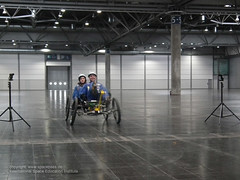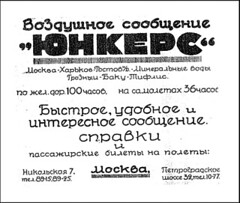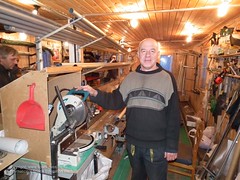| Student reports - 2012 |
Max Frank
Team Germany 1 2012,HS
www.spaceeducation.eu
Trainingslager auf Mallorca, Teil 1
 Die Winterferien waren für die Moonbuggy Piloten als Trainingslager gedacht. Hierbei sollten wir die Grundlage für den Wettkampf durch Ausdauer und Krafttraining erreichen. Nun bin ich alleine zum Trainingslager aufgebrochen, um alle Gegebenheiten für das Jahr 2013 zu testen.
Die Winterferien waren für die Moonbuggy Piloten als Trainingslager gedacht. Hierbei sollten wir die Grundlage für den Wettkampf durch Ausdauer und Krafttraining erreichen. Nun bin ich alleine zum Trainingslager aufgebrochen, um alle Gegebenheiten für das Jahr 2013 zu testen.
Am 17.02 flog ich vom Flughafen Bremen nach Palma de Mallorca. Dort traf ich meine Familie, die aus Leipzig aus geflogen kamen. Gemeinsam fuhren wir mit dem Mietwagen zum Delta Hotel in Puig de Ros. Dieses hatte Ralf schon im Vorfeld durch seine Mallorca- Reise als Sport-Hotel entdeckt. Es ist eine riesige Anlage. Bestehend aus einem Innen- und zwei Außenpools, einem Kraftraum, einem Max Hürzeler Radverleih, mehreren Tennisplätzen und einer Minigolfanlage. Der restliche Hotelkomplex besteht aus sechs Etagen , einem Speisesaal, einer Bar und einem Internetraum. Von unserm Zimmer aus hatten wir einen hervorragenden Blick auf das Mittelmeer hinaus.
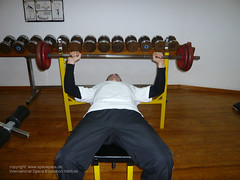 Am Anreisetag packten wir unsere Sachen aus und erkundeten die Umgebung. Meine Eltern zu Fuß und ich gleich mit einer halben Stunde laufen. Nach der Erwärmung setzte ich mein Training mit einer halben Stunde Krafttraining fort und dehnte mich anschließend noch. Um 19 Uhr begann das Abendbrot. Es gab eine große Auswahl am Buffet. Das ist genau das richtige für einen Sportler.
Am Anreisetag packten wir unsere Sachen aus und erkundeten die Umgebung. Meine Eltern zu Fuß und ich gleich mit einer halben Stunde laufen. Nach der Erwärmung setzte ich mein Training mit einer halben Stunde Krafttraining fort und dehnte mich anschließend noch. Um 19 Uhr begann das Abendbrot. Es gab eine große Auswahl am Buffet. Das ist genau das richtige für einen Sportler.
Am darauf folgenden Tag holten mein Vati und ich die vorreservierten Räder ab. Dabei hat man uns die Fahrräder an die individuelle Bein-, Körper- und Armlänge angepasst. Ich fühlte mich fast wie auf meinem Rennfahrrad zuhause, was ich dann noch mit Feinabstimmungen erreicht hatte. Für unsere erste Runde orientierten wir uns an der Karte. Dabei fuhren wir die Küstenstraße Richtung Cala Pi und als nächstes nach Llucmajor. Die Stadt liegt in unmittelbarer Nähe vom Randa (Berg) entfernt, der 542m hoch ist. Von dort fuhren wir wieder nach Puig De Roes zum Delta Hotel. Bei der ersten Radtour legten wir 52km in 2h zurück. Anschließend konnten wir die Räder in einen separaten Raum aufhängen und abschließen und mussten sie nicht mit auf unser Zimmer nehmen. Zum Abschluss dehnten wir uns noch 10 min. Das bewirkt, dass die Muskeln sich entspannen und weniger Muskelkater verursachen.
Am Nachmittag schauten wir uns die Stadt Palma an. Zum Wahrzeichen gehört ihre gotische Kathedrale von Palma. In der Innenstadt waren die Vorbereitungen für den Kinder-Karneval im vollen Gange. Mit einigen Bühnen und tollen Kostümen lief die Party an. Nach dem Stadtbummel fuhren wir zum Hotel zurück.
 Heute ist Sonntag und alles beginnt mit einem Schlemmer Buffet. Von verschiedenen Müslisorten über Rührei zu Wurst und Käseplatten bis zu Obst und warmen Kakao war alles dabei. Das hatten wir auch für unsere bevorstehende Fahrt dringend nötig. Da konnte man nicht mit leeren Magen antreten. Beim Training genossen mein Vati und ich die sonnigen 12°C über Llucmajor, Campos und an der Küstenstraße zum Hotel zurück. Für die 86km Strecke brauchten wir 3h 16min.
Heute ist Sonntag und alles beginnt mit einem Schlemmer Buffet. Von verschiedenen Müslisorten über Rührei zu Wurst und Käseplatten bis zu Obst und warmen Kakao war alles dabei. Das hatten wir auch für unsere bevorstehende Fahrt dringend nötig. Da konnte man nicht mit leeren Magen antreten. Beim Training genossen mein Vati und ich die sonnigen 12°C über Llucmajor, Campos und an der Küstenstraße zum Hotel zurück. Für die 86km Strecke brauchten wir 3h 16min.
Am Nachmittag füllten wir unsere Kohlenhydrate bei einem Zwischenstop auf. Es gab eine großess Buffet Angebot eines Restaurants. Mit dem Auto fuhren wir zum San Salvador weiter. Dort besichtigten wir das Kloster, wobei wir einen Interessanten Fund gemacht hatten. Es handelte sich um ein ausgehangenes Weltmeisterschaftstrikot. Auf dem 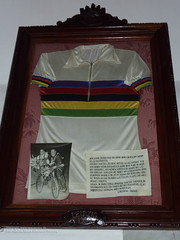 Bilderrahmen stand Leipzig mit dem Jahr 1960 notiert. Nach weiteren Recherchen fand ich heraus, dass es die 50. UCI-Weltmeisterschaft auf der Alfred Rosch Kampfbahn war. Dabei hatte Guillermo Timoner aus Felanitx (Mallorca) die Goldmedaille im Steherrennen gewonnen. Nach der Besichtigung fuhren wir mit dem Auto zurück. So verging auch dieser Abend und ließ uns durch die guten Wettervorhersagen auf einen neuen Tag freuen.
Bilderrahmen stand Leipzig mit dem Jahr 1960 notiert. Nach weiteren Recherchen fand ich heraus, dass es die 50. UCI-Weltmeisterschaft auf der Alfred Rosch Kampfbahn war. Dabei hatte Guillermo Timoner aus Felanitx (Mallorca) die Goldmedaille im Steherrennen gewonnen. Nach der Besichtigung fuhren wir mit dem Auto zurück. So verging auch dieser Abend und ließ uns durch die guten Wettervorhersagen auf einen neuen Tag freuen.
Heute stand das zweite Krafttprogramm an. Nach dem Frühstück erwärmten wir uns wieder mit 30min. Lauf um anschließend das Krafttraining zu absolvieren. Hierbei habe ich mir einen Kraftkreis aufgebaut der aus 9 Übungen bestand. Von jeden Übungen habe ich 15 Wiederholungen gemacht. Nach einer vollständigen Runde gab es eine Minute Pause und Wiederholte den Kraftkreis noch einmal. Nach einer halben Stunde waren wir fertig und führten unser 10 min. Dehnübungen wieder durch. Zum Nachmittag hin besichtigten wir das ,,Aquarium Palma'' was sehr sehenswert war und machten eine Stadtrundfahrt in Palma. Am Abend hatte ich noch meine ehemaligen Trainingskolegen in St’Arenal besucht, die auch gerade ein Trainingslager auf Mallorca machen.
Hiermit ist die erste Halbzeit vorbei. Mein Training verlief bis hierhin sehr gut. Das Wetter hat auch mitgespielt und es soll noch besser werden. Mit diesen guten Vorraussetzungen starte ich nun die zweite Halbzeit.
There are no translations available. Max Frank
Als wir auf dem Messegelände angekommen sind, empfing uns eine Hallenwärterin. Sie stellte uns das Licht für die Messehalle 5 an, die wir benutzen durften. Vicky und ich machten uns moonbuggyfertig und fuhren einige Bahnen. Während dessen baute Ralf Seeger (der Fotograf) das Equipment auf und stellte es passend für ein perfektes Foto ein. Zur richtigen Zeit kamen dann auch die Italiener, Julius, Tobias, Erik, und Nadin. Sie stellten sich vor dem Fotograf auf. Mit ihnen hatten wir eine tolle Fankulisse. Man fühlte sich schon richtig im Rennfieber beim vorbei fahren. Nachdem wir fertig waren kamen noch das zweite Team Germany und das Team Russia dran. In einer Glasröhre als Begehung von der einen Halle zur nächsten wurde jeder noch einmal einzeln als Portrait und als Team fotografiert. Dim lights Nun kamen wir noch zum Highlight des Tages. Draußen hatten Teammitglieder einen großen Schneehaufen zusammen geschoben. Durch den sollte ich dann mit dem Moonbuggy hindurchfahren. Nach einer Probefahrt konnten wir starten. Vicky und ich nahmen Anlauf und schossen durch den Schneeberg. Dabei feuerten uns alle Teammitglieder an. Der Buggy versank komplett und wir wirbelten eine riese Schneewolke auf. Eigentlich machte ich mich auf einen kleinen Absprung bereit aber damit war nichts. Nun war der Buggy komplett in Schnee gehüllt, ein weißes Spektakel. Damit er nicht anfängt zu rosten haben wir ihn so gut wie es geht von Schnee befreit. Im Anschluss mussten Vicky und ich schon wieder los. Wir machten noch einen kurzen Stopp bei meiner Oma und Opa. Von ihnen bekam ich noch viele passende Schrauben für das Moonbuggy, damit es auch qualitativ gut aussieht und sich keiner verletzt. Nach 4 Stunden Fahrt kamen wir wieder zuhause an. Das Fotoshooting war einsame spitze. Ich habe mich auch gefreut alle andern Teammitglieder zu sehen. Die Italiener haben uns klasse angefeuert auch noch nach dem 30sten. Foto. Insgesamt war es ein gelungener Tag mit einem Snow Best Of Foto, mit dem wir die Gegner ins Schwitzen bringen wollen. There are no translations available. Am Leipziger Raumfahrt-Bildungsinstitut laufen die Vorbereitungen fürs Moonbuggy-Rennen der Nasa in Huntsville Ralf Heckel, der Leiter des in Leipzig ansässigen Raumfahrt-Bildungs-Institutes (Isei) hat wieder das Marschtriebwerk gezündet: Gerade aus Russland zurück, drückt er aufs Tempo, damit seine Teams bei den Vorbereitungen für das Moonbuggy- Rennen im US-amerikanischen Huntsville so richtig in Fahrt kommen. Im April startet das von der Nasa organisierte Race, bei der es mit selbstgebauten vierrädrigen Tretmobilen über Stock und Stein geht. Seit sechs Jahren sind Isei-Mannschaften dort vertreten und räumten schon Preise ab. Heckel hat Motivation getankt: „Es baut einen auf, wenn einem hochkarätige Leute Anerkennung zollen“, sagt der Vereinschef. Gemeint sind die Experten der russischen Raketenschmiede Energija, die ihm bei seiner jüngsten Visite in der bei Moskau gelegenen Stadt Koroljow auf die Schulter klopften, die solide Nachwuchsarbeit am Institut und vor allem deren internationale Ausrichtung lobten. Denn der bunten Isei-Truppe gehören mittlerweile auch mehrere russische Studenten an, die regelmäßig am Sitz der Einrichtung in der Wurzner Straße 4 an Moonbuggys werkeln und 2011 zusammen mit den deutschen Crew-Mitgliedern in Huntsville schon ins Rennen gingen. Jewgeny Zakutin und Roman Tarasow sind gerade wieder in Leipzig, lernen fleißig Deutsch und bringen die zweisitzigen, mit vielen technischen Raffinessen versehenen Fahrzeuge der so genannten Ganymed-Baureihe auf Vordermann: „Wir sind in den Semesterferien schon Stammgäste hier“, erzählen die beiden, die in Moskau studieren und sich auf Huntsville freuen. „Da geben wir Gas“. Auch in Koroljow war das Duo an Heckels Seite. Die Zeremonie im dortigen Museum, das dem Vater der russischen Raumfahrttechnik, Sergej Koroljow (1907- 1966), gewidmet ist, sei beeindruckend gewesen, meinen sie. Bei dem Festakt hätte Heckel das Abbild jenes Gedenksteins überreicht, der auf sein Betreiben hin in den Spacewalk Honor - einen Weg der Würdigung für Protagonisten der Raumfahrt im Kennedy Space Center in Cape Canaveral - eingelassen worden war. Erinnert wird mit, der Inschrift jenes Steines an Koroljow und den russischen Raketentechniker Boris Tschertok (1912- 2011). „Die Übergabe im Museum war ein Gänsehaut-Moment“, so Heckel. Beim rasanten Wettbewerb in Huntsville wird er diesmal gleich vier Mannschaften betreuen: Zwei Germany-Teams mit jungen Leuten aus Leipzig und der Region, das Team Russia mit Zakutin, Tarasow und weiteren Kommilitonen und dann noch eine indische Gruppe, die sich 2011 am Isei mit dem Moonbuggy-Knowhow vertraut gemacht hatte. Heckel: „Sie werden mit einem Modell antreten, das rustikaler ist als unsere Fahrzeuge.“ Von denen ist derzeit eines in Bakum im Münsterland unterwegs. Dort macht der Leipziger Max Frank seine Ausbildung zum KFZ-Kommunikationstechniker und kurvt in der Freizeit durch die Gegend - macht sich fit für Huntsville. Seit 2010 gehört der 19-Jährige zum harten Kern am Isei. Zunächst als Trainer beim Mondmobil-Rennen aktiv, düste er 2011 selbst über den 1,3 Kilometer langen Parcours und kam auf dem vierten Platz ein. Einige der Hindernisse wurden touchiert, Strafsekunden waren die Quittung. Diesmal will der ehemalige Sportgymnasiast „noch eine Kohle drauflegen“. Heckel hofft, dass Franks Ganymed wie ein geölter Blitz abgeht. In den kommenden Ferien ist am Isei das Wintercamp angesetzt, bei dem erstmals Italiener dabei sind. Aus Venedig kommen die Schüler. Für sie hat Heckel ein dichtes Programm arrangiert: Besuche raumfahrthistorischer Stätten, des Ur-Observatoriums in Goseck oder der mit dem Isei Verbundenen Sternwarte in Kletzen. Und dann gibt es noch einen Kurs - Moonbuggy für Anfänger. Titelbild-Unterschrift: von Mario Beck vom 03.02.2012, (c) Leipziger Volkszeitung
There are no translations available. Moonbuggy-Fahrer gibt es weltweit, im Oldenburger Münsterland nur einen / Max Frank will auch 2012 in den USA beim Moonbuggy-Race der Nasa antreten. Doch ihm fehlt noch die Beifahrerin.
Ohne abzubremsen steuert Max Frank den Buggy durch enge Kurven. Der 19-Jährige bremst auch dann nicht, wenn eines der Räder längst den Halt auf der Straße verloren hat. Dann weiß man plötzlich ganz genau, was er meint, wenn er über Vertrauen innerhalb des Moonbuggy-Teams spricht. Dabei ist die kleine Tour durch den Bakumer Ortskern nichts weiter als eine ruhige Spazierfahrt. „Vertrauen ist unheimlich wichtig“, sagt der gebürtige Leipziger aus Erfahrung. Im letzten Jahr machte er mit seiner Co-Pilotin Nadin Rößler unter 80 Teams den vierten Platz beim Nasa-Moonbuggy-Race in den USA. 2010 holte er für das Team Germany den Titel. „In Leipzig war es leicht, Fahrerinnen für das Team zu begeistern“, sagt Frank. Aber jetzt lebt er in Bakum, macht hier seine Ausbildung zum Kfz-Kommunikationstechniker bei der Firma Südbeck. Deshalb sucht er in der Umgebung eine neue Trainingspartnerin und Co-Pilotin für die kommende Weltmeisterschaft. Beim Moonbuggy-Race in Huntsville im US-amerikanischen Bundestaat Alabama geht es darum, das geländetaugliche Liegerad mit möglichst hohem Tempo überein dem Mond nachempfundenen Parcours zu steuern. Teams aus aller Welt sind jedes Jahr dabei. Jetzt, da endlich sein Moonbuggy in Bakum angekommen ist, müsste Max Frank langsam mit dem Training beginnen, um bei der Weltmeisterschaft eine Chance zu haben. „Leider habe ich aber noch keine Co-Pilotin Co-Pilotin gefunden“, sagt er. Dabei hat er Flyer verteilt und Plakate ausgehängt, doch bislang ohne Erfolg. Die Hoffnung verloren hat er aber noch längst nicht. „Um einzusteigen muss man weder unheimlich sportlich noch technisch interessiert sein“, sagt Frank. Nur Ehrgeiz und den Antrieb, etwas Besonderes zu machen, sei wichtig. „Alles andere kommt mit der Zeit“, ist er überzeugt. Das entscheidende Kriterium ist allerdings das Geschlecht: „Ich brauche eine weibliche Co-Pilotin. So sind die Regeln der Nasa.“ Sie sollte am Besten zwischen 17 und 20 Jahren alt sein: „Schließlich muss ja auch die Chemie stimmen, wenn man viel Zeit miteinander verbringt“, sagt er. Für das Training mit seiner neuen Co-Pilotin will Frank das Trainingsprogramm ausarbeiten. Das kann er: Schließlich war er auf einem Sportgymnasium und bringt zehn Jahre Radsport-Erfahrung mit. Bereits im Februar geht es für Frank ins Trainingslager nach Mallorca. Ideal wäre es, wenn seine neue Partnerin schon dabei wäre. „Am Geld soll es nicht scheitern“, sagt er. Schließlich werde der Leipziger Verein „International Space Education Institute“ (ISEI), dem er angehört, von über 200 Sponsoren und Spendern unterstützt. Die Mitglieder zahlen nur einen kleinen Beitrag. Für den Verein ist das Moonbuggy ein Vehikel, um junge Menschen aus allen Teilen der Erde zusammenzubringen. Handwerker, Ingenieure, Wissenschaftler und Manager tüfteln an den Moonbuggys und messen sich schließlich bei internationalen Wettkämpfen. Zum ISEI gehören Deutsche, Italiener, Inder ebenso wie Russen und Franzosen. Im Oldenburger Münsterland ist Max Frank allerdings bisher das einzige Mitglied. Das soll sich ändern. Max Frank ist per E-Mail unter This e-mail address is being protected from spambots. You need JavaScript enabled to view it zu erreichen.
There are no translations available. Elektroautos mit Flügeln Ralf Heckel Moskau, 11.1.2012
Natürlich will ich auch in dem Elektro-Buggy sitzen und zwänge mich in den Käfig. Es geht ganz leicht. Da ist kein Anlassergeräusch. Man gibt Gas und flitzt davon. Wahnsinn! Man ist sich einig, dass wir dieses Element und diese Werkstatt in unsere Berufspraktikums-Angebote als Auslandsmodul mit einbauen. Nun zeigt uns Roman noch den Fliegerclub. Vier neben- und übereinander gestapelte Container ist alles was ich im Schnee sehe. Dann geht die Tür auf. Darin befinden sich ausgewachsene Werkstätten für Maschinenbau, Leichtbau und eine Nähstube. Neben den Drehmaschinen stehen 3 Ultraleichtflugzeuge. Sie besitzen je einen 4-Zylindermotor, 2 Sitze und eine kleine Pilotenkanzel. Ein Rohrgestänge aus Aluminium hält alles zusammen. Die 6-meter-Flügel aus Fallschirmstoff sind wegen den fehlenden Platzes nicht aufgebaut.
Während eines Rundganges durch alle 4 Container wird mir schnell klar, dass hier Profis mit Herz am Werke sind. Alles vom Sitzbezug über die Gestänge bis zum Umbau des Motors wird selbst gemacht. Roman erzählt vom BTZ in Borsdorf, unserem Moonbuggy und dem Austauschprogramm. Schnell in sich die Flugzeugbauer einig – „Wir laden Eure Schüler hierher zum Praktikum ein. Zur Belohnung für die Besten gibt es einen 1-Tagesflug über die sommerlichen Wälder Moskaus.“ So beschließen wir bei einem herzhaften Schaschlik-Spieß das nächste Modul für unser internationales Austausch-Praktikum. Es wird über einen neuen Prototyp nachgedacht, ein Elektroauto mit Moonbuggy-Leichtbau und Deltaflügel als Elektro-Ultraleichtflieger mit Fahreigenschaften. … So etwas wäre dann schon Filmreif für James Bond! |
































